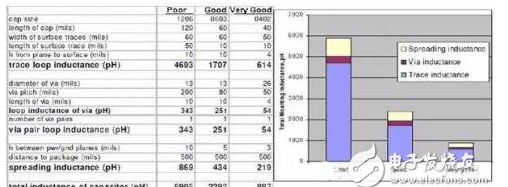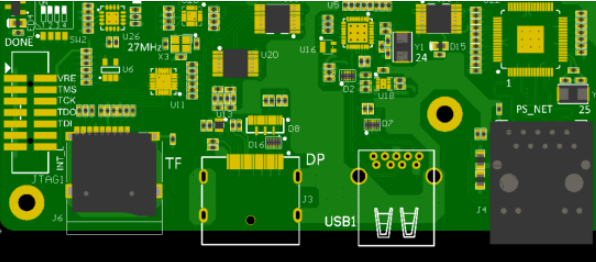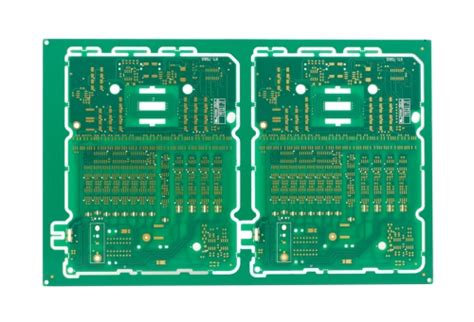Pcb prototype board printer
Benefits Of Using A PCB Prototype Board Printer For Rapid Prototyping
The advent of PCB prototype board printers has revolutionized the field of electronics, offering a myriad of benefits for rapid prototyping. These advanced machines have become indispensable tools for engineers and designers, enabling them to streamline the development process and bring innovative products to market more swiftly.
One of the primary advantages of using a PCB prototype board printer is the significant reduction in turnaround time.
Traditional methods of PCB fabrication often involve lengthy processes, including outsourcing to specialized manufacturers, which can take several weeks. In contrast, a PCB prototype board printer allows for the in-house production of circuit boards within hours, thereby accelerating the design iteration cycle and enabling faster testing and refinement of electronic components.
Moreover, the cost-effectiveness of PCB prototype board printers cannot be overstated.
By eliminating the need for outsourcing, companies can save substantial amounts on manufacturing costs, especially when dealing with small batches or single prototypes. This financial efficiency is particularly beneficial for startups and small enterprises that operate on limited budgets. Additionally, the ability to produce prototypes in-house reduces the risk of intellectual property theft, as sensitive designs do not need to be shared with external vendors.
Another notable benefit is the enhanced flexibility and customization that PCB prototype board printers offer.
Engineers can easily modify designs and print multiple iterations to test different configurations and functionalities. This iterative approach fosters innovation and allows for the rapid identification and resolution of design flaws. Furthermore, the precision and accuracy of modern PCB printers ensure that even the most intricate and complex designs can be faithfully reproduced, which is crucial for the development of high-performance electronic devices.
The environmental impact of PCB prototype board printers is also a significant consideration.
Traditional PCB manufacturing processes often involve the use of hazardous chemicals and generate considerable waste. In contrast, many PCB prototype board printers utilize additive manufacturing techniques, which are generally more environmentally friendly. These printers typically use less material and produce less waste, contributing to more sustainable manufacturing practices.
In addition to these practical benefits, the use of PCB prototype board printers fosters a culture of innovation and experimentation within organizations.
By providing engineers with the tools to quickly and efficiently test new ideas, these printers encourage a more dynamic and creative approach to product development. This can lead to the discovery of novel solutions and the creation of cutting-edge technologies that might not have been possible through conventional methods.
Furthermore, the integration of PCB prototype board printers into the development workflow can enhance collaboration among team members.
With the ability to rapidly produce and share physical prototypes, engineers, designers, and other stakeholders can more effectively communicate their ideas and provide feedback. This collaborative environment can lead to more cohesive and well-rounded product designs, ultimately resulting in higher-quality end products.
In conclusion, the benefits of using a PCB prototype board printer for rapid prototyping are manifold. From reducing turnaround times and costs to enhancing flexibility, precision, and environmental sustainability, these advanced machines are transforming the landscape of electronic design and manufacturing. By fostering innovation, improving collaboration, and enabling more efficient development processes, PCB prototype board printers are proving to be invaluable assets in the quest to bring new and improved electronic products to market.
How To Choose The Right PCB Prototype Board Printer For Your Needs
Selecting the appropriate PCB prototype board printer for your needs is a critical decision that can significantly impact the efficiency and quality of your electronic projects. With a myriad of options available in the market, it is essential to consider several factors to ensure that the chosen printer aligns with your specific requirements. Understanding these factors will not only streamline your prototyping process but also enhance the overall performance of your electronic designs.
To begin with, it is crucial to evaluate the resolution and precision of the PCB prototype board printer.
High-resolution printers are capable of producing intricate and detailed circuit patterns, which are essential for complex electronic designs. The precision of the printer determines the accuracy of the printed circuit boards, ensuring that the components fit perfectly and function as intended. Therefore, opting for a printer with high resolution and precision is paramount for achieving optimal results.
Another important consideration is the type of materials the printer can handle.
Different PCB prototype board printers are designed to work with various substrates, such as FR4, aluminum, and flexible materials. It is vital to choose a printer that is compatible with the materials you intend to use in your projects. This compatibility ensures that the printed circuit boards are durable and meet the specific requirements of your applications.
In addition to material compatibility, the speed and efficiency of the printer are also significant factors to consider.
Rapid prototyping is essential in today’s fast-paced development environment, and a printer that can produce high-quality PCBs quickly will greatly enhance your productivity. Assessing the printer’s printing speed and its ability to handle multiple projects simultaneously can help you determine its suitability for your needs.
Furthermore, the ease of use and the level of automation offered by the PCB prototype board printer should not be overlooked.
User-friendly interfaces and automated features can simplify the prototyping process, reducing the likelihood of errors and saving valuable time. Printers with intuitive software and straightforward setup procedures are particularly beneficial for users who may not have extensive experience with PCB design and fabrication.
Cost is another critical factor that influences the decision-making process.
While it may be tempting to opt for the most affordable option, it is important to consider the long-term value and return on investment. High-quality printers may come with a higher initial cost, but their durability, reliability, and superior performance can result in significant cost savings over time. Balancing the initial investment with the expected benefits is essential for making an informed choice.
Moreover, it is advisable to consider the level of support and service provided by the manufacturer.
Reliable customer support and access to technical assistance can be invaluable, especially when encountering challenges or requiring maintenance. Manufacturers that offer comprehensive support services, including training, troubleshooting, and repair, can greatly enhance your overall experience and ensure the longevity of your printer.
Lastly, it is beneficial to read reviews and seek recommendations from other users in the industry.
Insights from individuals who have firsthand experience with different PCB prototype board printers can provide valuable information about their performance, reliability, and ease of use. Engaging with the community and gathering feedback can help you make a well-informed decision.
In conclusion, choosing the right PCB prototype board printer involves careful consideration of various factors, including resolution, material compatibility, speed, ease of use, cost, and manufacturer support. By thoroughly evaluating these aspects and seeking input from experienced users, you can select a printer that meets your specific needs and enhances the efficiency and quality of your electronic projects.

Step-By-Step Guide To Creating Your First PCB Prototype With A Board Printer
Creating your first PCB prototype with a board printer can be an exciting and rewarding experience, especially for those venturing into electronics design and manufacturing. The process, while intricate, can be broken down into manageable steps that ensure precision and functionality. To begin, it is essential to have a clear understanding of the design requirements and the necessary tools. This includes a PCB design software, a board printer, and the appropriate materials such as copper-clad boards, etching chemicals, and soldering equipment.
The initial step in creating a PCB prototype involves designing the circuit layout using PCB design software.
Programs like Eagle, KiCad, or Altium Designer are popular choices that offer a range of features to help you create a detailed and accurate schematic. During this phase, it is crucial to meticulously plan the placement of components and the routing of electrical connections to avoid any potential issues in the final product. Once the design is complete, it should be thoroughly reviewed and verified to ensure that all connections are correct and that there are no design rule violations.
Following the design phase, the next step is to prepare the board printer.
This involves setting up the printer according to the manufacturer’s instructions, which typically includes loading the appropriate ink or toner and calibrating the printer to ensure accurate printing. It is also important to prepare the copper-clad board by cleaning it thoroughly to remove any oxidation or contaminants that could affect the printing process. A clean surface ensures better adhesion of the printed design and improves the overall quality of the prototype.
Once the board and printer are prepared, the design can be transferred onto the copper-clad board.
This is done by printing the design directly onto the board using the board printer. The precision of this step is critical, as any misalignment or errors in the printed design can lead to issues in the final prototype. After printing, the board is typically subjected to a curing process to ensure that the ink or toner adheres firmly to the copper surface.
The next phase involves etching the board to remove the unwanted copper, leaving only the desired circuit pattern.
This is usually done using a chemical etchant such as ferric chloride or ammonium persulfate. The board is submerged in the etchant solution, and the chemical reaction removes the exposed copper, leaving behind the printed design. It is important to monitor the etching process closely to avoid over-etching, which can damage the circuit traces.
After etching, the board is cleaned to remove any residual chemicals and the protective ink or toner.
This reveals the copper traces that form the circuit. The board is then drilled to create holes for component leads, which can be done using a precision drill press. Once the holes are drilled, the board is ready for component placement and soldering. Components are carefully placed according to the design, and soldered in place to ensure secure electrical connections.
Finally, the completed PCB prototype should be tested to verify its functionality. This involves checking for continuity, verifying that all connections are correct, and ensuring that the circuit operates as intended. Any issues identified during testing should be addressed, which may involve re-soldering connections or making minor adjustments to the design.
In conclusion, creating a PCB prototype with a board printer involves a series of detailed steps that require careful planning and execution. By following these steps meticulously, you can produce a high-quality prototype that meets your design specifications and functions as intended.
Top Features To Look For In A Modern PCB Prototype Board Printer
When selecting a modern PCB prototype board printer, it is essential to consider several key features that can significantly impact the efficiency, accuracy, and overall quality of your printed circuit boards. One of the foremost attributes to evaluate is the printer’s resolution. High-resolution printers are capable of producing finer details, which is crucial for complex and densely packed circuit designs. A resolution of at least 10 microns is generally recommended for most applications, ensuring that even the smallest components are accurately represented.
In addition to resolution, the speed of the printer is another critical factor. Rapid prototyping is often a necessity in the fast-paced world of electronics design, and a printer that can produce boards quickly without compromising on quality can be a significant asset. Look for printers that offer a balance between speed and precision, as this will enable you to iterate designs swiftly while maintaining high standards.
Another important feature to consider is the printer’s material compatibility. Modern PCB prototype board printers should support a variety of substrates, including FR4, polyimide, and other flexible materials. This versatility allows designers to experiment with different materials to find the best fit for their specific application. Additionally, the ability to print with various conductive inks and pastes can further expand the range of possible designs and functionalities.
Ease of use is also a paramount consideration. A user-friendly interface, coupled with intuitive software, can greatly enhance the overall experience and reduce the learning curve for new users. Features such as automated calibration, real-time monitoring, and error detection can streamline the printing process and minimize the likelihood of costly mistakes. Furthermore, compatibility with popular design software can facilitate seamless integration into existing workflows, making the transition to a new printer smoother and more efficient.
Durability and reliability are equally important when choosing a PCB prototype board printer. A robust machine that can withstand continuous use without frequent maintenance or breakdowns will save time and resources in the long run. Look for printers with a solid build quality and positive reviews regarding their longevity and performance under various conditions.
Moreover, the ability to produce multilayer boards is a feature that should not be overlooked. As electronic devices become more sophisticated, the demand for multilayer PCBs has increased. A printer capable of handling multiple layers can accommodate more complex designs, providing greater flexibility and functionality in your projects.
Cost is always a consideration, but it should be weighed against the features and capabilities of the printer. While it may be tempting to opt for a less expensive model, investing in a high-quality printer with advanced features can pay off in the long run by reducing errors, improving efficiency, and enabling more complex designs.
Lastly, consider the level of support and service provided by the manufacturer. Access to technical support, regular software updates, and a comprehensive warranty can provide peace of mind and ensure that your investment remains valuable over time. A manufacturer with a strong reputation for customer service can be a reliable partner in your prototyping endeavors.
In conclusion, when selecting a modern PCB prototype board printer, it is crucial to consider factors such as resolution, speed, material compatibility, ease of use, durability, multilayer capability, cost, and manufacturer support. By carefully evaluating these features, you can choose a printer that meets your specific needs and enhances your ability to produce high-quality printed circuit boards efficiently and accurately.







